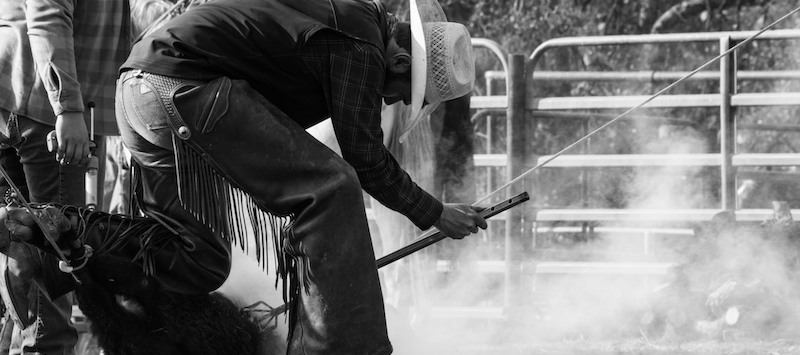The old west is synonymous with the cowboy lifestyle, one highly admired and glamorized in modern times. The sound of blasting gunfights, the clinking of spur rowels on saloon floors, wide-open prairies and the pounding of hooves kicking up dust in a panicked stampede are all associated with an era long gone.
There are traditions of the cowboy lifestyle that continue to live on, however, one of those being cattle branding. Brands are an impressive, but complex, language and the practice of branding pre-dates the old west era. Historians estimate ancient Egypt as the beginning of livestock branding, with images like those of hieroglyphics, but the practice still holds its value and necessity in today’s livestock industry. With two common methods; it has become an art form with functionality.
Branding was as a method for ranchers to keep track of any wayward cattle-open range grazing cattle were common back then- and to assist in finding cattle that rustlers had stolen. If lost cattle didn’t have a brand, they were considered unidentifiable “slicks” and couldn’t be claimed by their rightful owner. Hot iron branding has been a trustworthy method since the tradition began and still holds its original purpose. Nowadays, there are freeze branding and ear tagging options, both common methods since thieves are still a risk and the need to identify cattle is crucial, but neither are nearly as historic, and sometimes not as effective, as hot branding.
Livestock brands are both rich in history and complicated in their reading. A brand registered in one state can be read differently than the same brand registered in another state. A cowboy can call his brand one way, but brand inspectors read it another. The beauty, and complexity, of these designs is that they can be read left to right, top to bottom, or outside to inside (if enclosed), depending on the symbol, letter and number placement. Each brand means something completely unique to its creator and usually runs deep through a family’s heritage.
Common American symbols you might see, typically in combination with letters or numbers, are either a half-circle, slash, bar, circle, or cross. Letters can be characterized as running, lazy, combined, reversed, hanging, flying etc., depending on the script attached to each. Images, such as a heart, a sun, and spur are acceptable brands, but usually used alone. What makes the language unique is that each added character, script, image, or letter is spoken when reading a brand out loud. For example, an “M” enclosed in a circle is called a “Circle M.” Furthermore, a dash and letter “A” laying on its side are called, ” bar lazy A.” For a list of symbol and character explanations from Texas and Southwestern Cattle Raisers Associations, go to tscrabrands.com.
Horses and cattle are branded in different locations, typically, and registration of a brand requires a specific location to be chosen before approval. Keeping brands up to date with County or State offices to prevent any issues should cattle be stolen or lost is recommended. Nowadays, it is common for brands to require 3 or more characters to be approved as well, so as not to duplicate a similar brand registered in the same area. It is important that cattle have simple brands, so they are decipherable. This is also very crucial to ensure markings can’t be easily altered by modern-day cattle rustlers.
While the Old West is an era long gone, the practice and necessity of branding livestock, to prevent theft, is still extremely strong; continuing with a legacy, and beautifully intricate language, rooted deep in the history of mankind.







